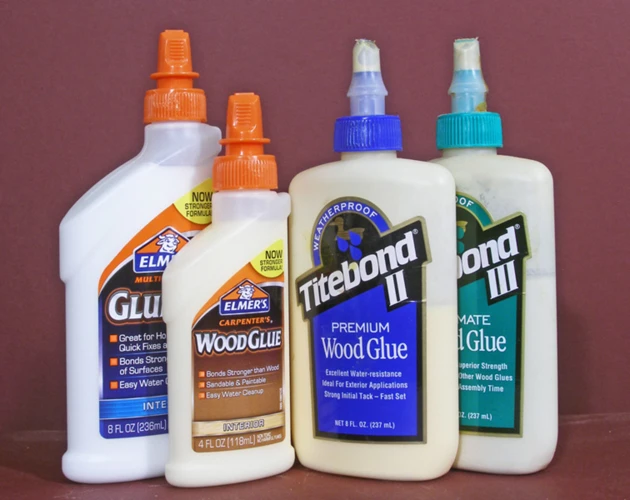Combining the durability of plastic with the strength of wood creates a versatile and robust material. Gluing PVC to wood involves a process of adhering a PVC sheet to a plywood base, resulting in a composite that enjoys the benefits of both materials. This task is common in various projects, from cabinetry to outdoor applications.
PVC Sheet Attachment Methods
To attach PVC sheets to plywood, several methods can be employed, but adhesives are the most common due to their ease of use and strong bond. Understanding the correct technique and choosing the right PVC sheet adhesive is crucial for a successful outcome.
Benefits of PVC Plywood Bonding
The bonding of PVC sheet to plywood delivers a final product that’s not only moisture-resistant but also boasts an enhanced aesthetic appeal. The seamless integration of these materials provides a surface that’s easy to clean and maintain, making PVC plywood bonding a preferred choice for many applications.
Types of PVC Glue
Choosing the correct adhesive is vital to ensure the longevity and strength of the bond between PVC and wood.
PVC Sheet Adhesive Varieties
The market offers an array of PVC sheet adhesive types designed for different applications. Selecting the appropriate type hinges on factors such as exposure to elements, the flexibility required, and the project’s specific needs.
Waterproof Glues for PVC
For projects exposed to moisture, waterproof glues for PVC are indispensable. These adhesives are formulated to withstand damp environments, preventing the bond from deteriorating over time.
Plywood Surface Preparation
Proper preparation of the plywood surface is a critical step in the PVC sheet to plywood DIY process. It ensures the adhesive bonds effectively to the wood.
Cleaning the Plywood Surface
Before applying any adhesive, the plywood needs to be clean and free of debris. A thorough wipe-down with a damp cloth can remove any sawdust or oils that might prevent the glue from adhering properly.
Sanding for Better Adhesion
Sanding the plywood can enhance the surface area for the glue to grip onto, resulting in a stronger bond. A medium-grit sandpaper is typically suitable for this task, followed by a final cleaning to remove any dust created by the sanding process.
Step-by-Step Guide: PVC Sheet to Plywood DIY
Now, let’s delve into the practical steps of gluing PVC to wood.
Measuring and Cutting the PVC Sheet
- Measure the plywood surface and PVC sheet accurately to ensure a perfect fit.
- Using a straightedge and a sharp blade, cut the PVC sheet according to the measurements.
Applying the Adhesive
Spread a consistent layer of the chosen PVC glue across the plywood surface, making sure to cover the entire area where the sheet will be placed.
Positioning and Pressing the PVC Sheet
Align the PVC sheet with the plywood edges and gently lay it down onto the glue. Apply pressure evenly across the surface to remove any air pockets and ensure full contact between the materials.
Bonding PVC to Wood Tips
For an enduring and robust bond, consider these tips:
Ensuring a Strong Bond
Adequate pressure and time are key to a strong bond. Using a roller or a similar tool can help apply even pressure across the PVC sheet.
Dealing with Bubbles and Wrinkles
Should bubbles or wrinkles appear, carefully lift the PVC sheet and smooth it out from the center towards the edges before the glue sets.
Adhesive Curing Time PVC
The adhesive curing time PVC plays a significant role in the success of the project. It’s the period needed for the glue to fully harden and reach its maximum strength.
Understanding Curing Times
Curing times can vary widely based on the type of adhesive used and environmental conditions. Typically, adhesives come with manufacturer recommendations for curing times which should be followed for best results.
Factors Affecting Curing Time
Temperature and humidity are the primary environmental factors affecting curing time. Higher humidity and temperatures can accelerate the curing process, whereas cooler, drier conditions can prolong it.
Troubleshooting Common Issues
Even with careful preparation and application, issues can arise when gluing PVC to wood. Here’s how to address them:
How to Remove Excess Glue
If excess glue oozes out from under the PVC sheet, swiftly wipe it off with a damp cloth before it hardens. For cured glue, gently scraping it off with a putty knife may be necessary.
What to Do If the PVC Doesn’t Stick
If the PVC sheet isn’t sticking properly, it’s often due to insufficient adhesive, lack of pressure during application, or contamination on the plywood surface. Reassess these factors and reapply as needed.
Conclusion and Additional Resources
Mastering the technique of gluing PVC to wood can expand the range of your DIY projects significantly, offering you the flexibility to create durable and moisture-resistant finishes.
Maintaining the Bond Over Time
To ensure the longevity of your project, it’s important to protect the bonded surfaces from extreme temperatures and to keep the area clean, which can help maintain the integrity of the bond over time.
Working on a project that involves adhering PVC sheets to various surfaces? Our blog has you covered with step-by-step guides. Learn the specifics of bonding PVC sheets with our article on how to glue PVC sheets. If you’re looking to attach PVC to a wood surface, our detailed guide on how to glue PVC to wood will be incredibly helpful. And for those who are working with plywood and concrete, don’t miss our insights on how to glue plywood to concrete. Get all the tips and tricks you need for a successful adhesion project!
Further Reading on PVC Projects
For those keen on exploring more about PVC projects and advancing their skills, numerous resources, including tutorials, forums, and books, are available to guide you through more complex tasks and techniques.


